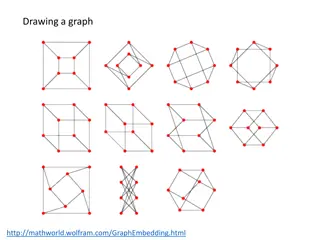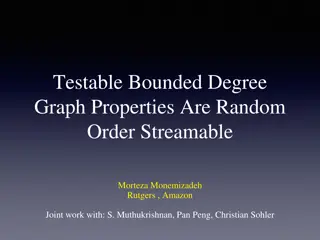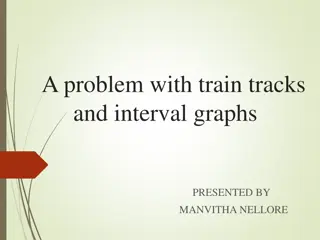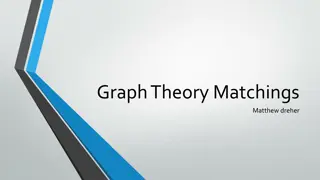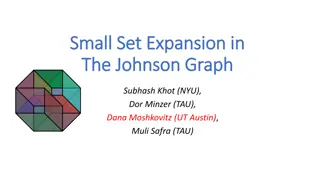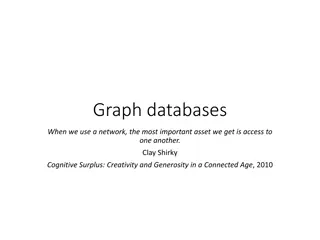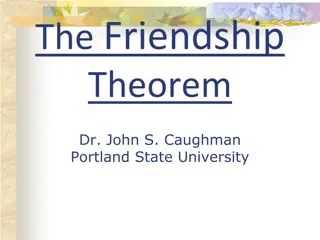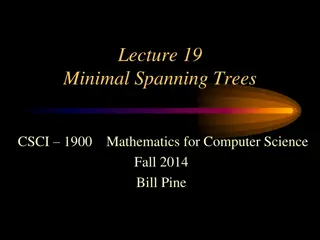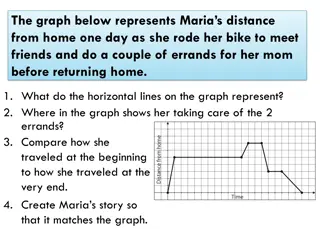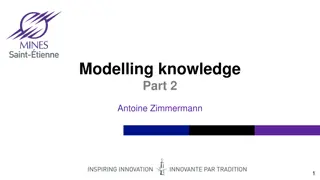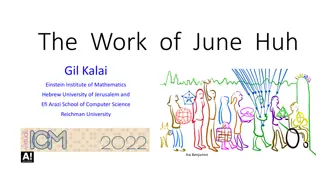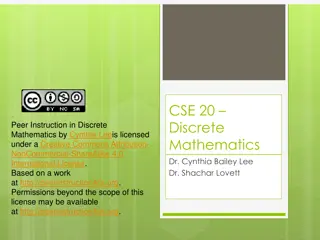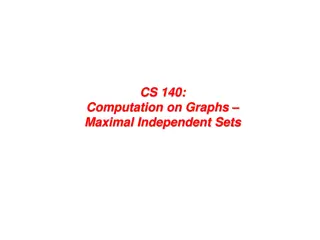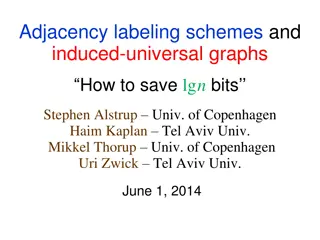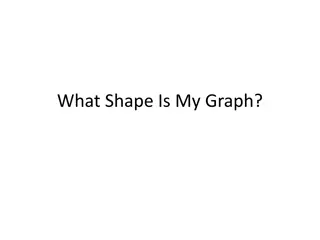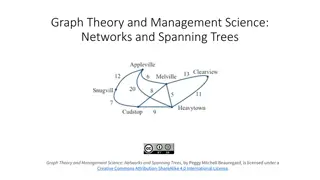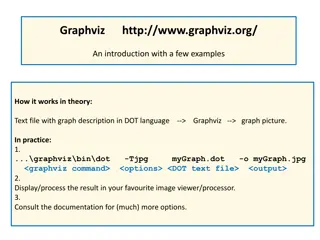Understanding Graph Theory Fundamentals
Explore the basics of graph theory including graph properties, theorems, bipartite graphs, matchings, vertices, and degrees. Learn about partitioning, Hall's theorem, and how graphs can be used to represent relationships.
Download Presentation

Please find below an Image/Link to download the presentation.
The content on the website is provided AS IS for your information and personal use only. It may not be sold, licensed, or shared on other websites without obtaining consent from the author. Download presentation by click this link. If you encounter any issues during the download, it is possible that the publisher has removed the file from their server.
E N D
Presentation Transcript
CSI 2101: Discrete Structures 9. GRAPHS institution Andrej Bogdanov date
graphs a c e b d vertices edges degrees
Theorem: The sum of the degrees in every G equals twice the number of edges. a c e b d
Corollary: If G has a vertex of odd degree then it has another one.
sets refresher A = {1, 2, 3} B = {3, 4} A B = A B = A B = A, Bpartition SifA B = S and A B =
bipartite graphs G is bipartite if its vertices can be partitioned into A and B so all edges are between A and B
Theorem: In a bipartite graph the sum of degrees of A equals the sum of degrees of B.
matchings A matching is a subset M of edges so that every vertex is touched by at most one edge in M.
Faye Gina Helen Ivy Alex Bob Carl Dave Ernie
Fred Greg Henry Ivan Alice Betty Carol Dana Eve
Faye Gina Helen Ivy Alex Bob Carl Dave Ernie
G is regular if all vertex degrees are equal. Theorem: Every regular bipartite graph with non- empty edge set has a perfect matching.
stable matchings Fred Dave Fred Eric Dave Eric 1 3 2 1 3 2 1 3 2 2 3 1 1 3 2 2 3 1 2 1 3 2 1 3 1 2 3 1 2 3 1 2 3 1 2 3 Alice Betty Carol Alice Betty Carol
Gale-Shapley algorithm in each round: men propose in order of preference women reject all except best proposal rejections are final
Fred Dave Eric 1 3 2 1 3 2 1 3 2 2 3 1 1 3 2 2 3 1 2 1 3 2 1 3 1 2 3 1 2 3 1 2 3 1 2 3 Alice Betty Carol 1 3 2 1 3 2 1 3 2 2 3 1 1 3 2 2 3 1 2 1 3 2 1 3 1 2 3 1 2 3 1 2 3 1 2 3
Greg Henry Ethan Fred 2431 1243 2314 3412 2431 1243 2314 3412 4312 4132 1423 2431 4312 4132 1423 2431 Alice Betty Diana Carol 2431 1243 2314 3412 2431 1243 2314 3412 4312 4132 1423 2431 4312 4132 1423 2431
Greg Henry Ethan Fred 2431 1243 2314 3412 2431 1243 2314 3412 4312 4132 1423 2431 4312 4132 1423 2431 Alice Betty Diana Carol
Theorem: Gale-Shapley terminates, everyone is matched, and the matching is stable.
Theorem: If m was ever rejected by w then (m, w) does not belong to any stable matching
Fred Dave Fred Eric Dave Eric 2 1 3 3 2 1 1 3 2 2 1 3 3 2 1 1 3 2 2 1 3 3 2 1 1 3 2 2 1 3 3 2 1 1 3 2 Alice Betty Carol Alice Betty Carol Fred Dave Eric 2 1 3 3 2 1 1 3 2 2 1 3 3 2 1 1 3 2 Alice Betty Carol
stable matching summary Gale-Shapley: stable matching always exists finds boy-optimal one or girl-optimal if roles are reversed there could be others To show given matching is stable, must verify all possible couples are not rogue








